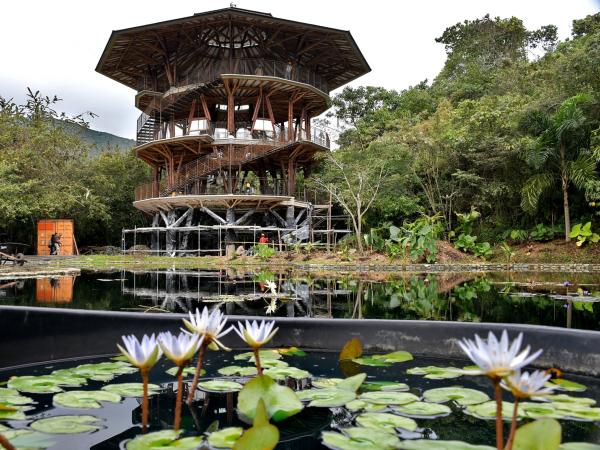There are those who say that Gold is greenthe green of the plants, and in the Botanical Garden of Cali they have dedicated themselves to preserving in their 17 hectares a wealth unmatched in the world. On each path a botanical collection is preserved that pays homage to the biodiversity of the city and recalls the many reasons why the capital of the department of Valle del Cauca was chosen to host the United Nations Conference on Biodiversity COP16.
Maria Clara Dominguez She is the director of the Cali Zoo Foundation and administrator of the Garden. She knows that His work goes beyond and seeks to sow in the present something that the generations to come can enjoy. “This September 1st we celebrate one year of reopening and this year we have received more than 70,000 visitors who have crossed and enjoyed our tropical dry forest, something that is very rare in Colombia, because it is estimated that there are only 8% of soils with these characteristics in the country.”Dominguez told EFE.
To delight the senses
Amidst bromeliads, orchids, heliconias, liberals, palms and hundreds of species of flowers, the director assures that the Botanical Garden of Cali ““He is a baby who is just learning to walk, but he does so firmly with each step”. “We are on the right track, the work is intense, but future generations will enjoy a much stronger garden and that fills us with pride”Domínguez insists. Bees, butterflies and hundreds of birds of all species accompany the tour of those who are attracted by this space located at the foot of the imposing Farallones de Cali and that will be one of the main attractions of COP16.
“This will be a must-see site for international visitors and environmentalists from around the world. We have already prepared guided tours, bird watching and talks so that they can enjoy all the ecosystems.”said the director, who has been in constant contact with representatives of the botanical gardens of New York and Missouri.
A garden where science flourishes
Alejandro Zuluaga, a professor at the University of Valle, is one of the constant visitors to the Garden, where they try to prevent the extinction of the Cauca Lily (Urceolina caucana), a species in danger of extinction in the geographic valley of the Cauca River.
“This space is perfect for studying the threats that populations face, as it allows us to study the forest and reproduce the species outside the ecosystem. In the future they will be reintroduced.”said the teacher. For her part, Alejandra Conde, master in environmental education from the Santiago de Cali Universitysees the Garden as an example of environmental paradises that resist dying due to urban predation. “The Garden is a biodiverse space in the middle of the city, a commitment to the conservation of ecosystems in our urban territory that is threatened every day by urban growth”Conde told EFE.
Currently, the directors of the Botanical Garden of Cali are developing the second phase of physical infrastructure, where three new stations are being adapted. “We want them to keep visiting us, plants are very attractive because they teach us many things, but, above all, to love them and respect our ecosystems”concluded Director Dominguez. Cali, the main city of the Colombian Pacific, will be the venue for the United Nations Conference on Biodiversity (COP16), which will be held between October 21 and November 1 of this year.
“This will be the most important event ever held in the country’s history due to its global impact. Today, everyone on the planet is talking about Cali because of the COP, and it is a source of pride that the nature of our Pacific sets the international agenda; this city of reconciliation is also reconciling with the environment with the Botanical Garden.”concluded Alejandro Eder, mayor of Cali, to EFE.
EFE
















